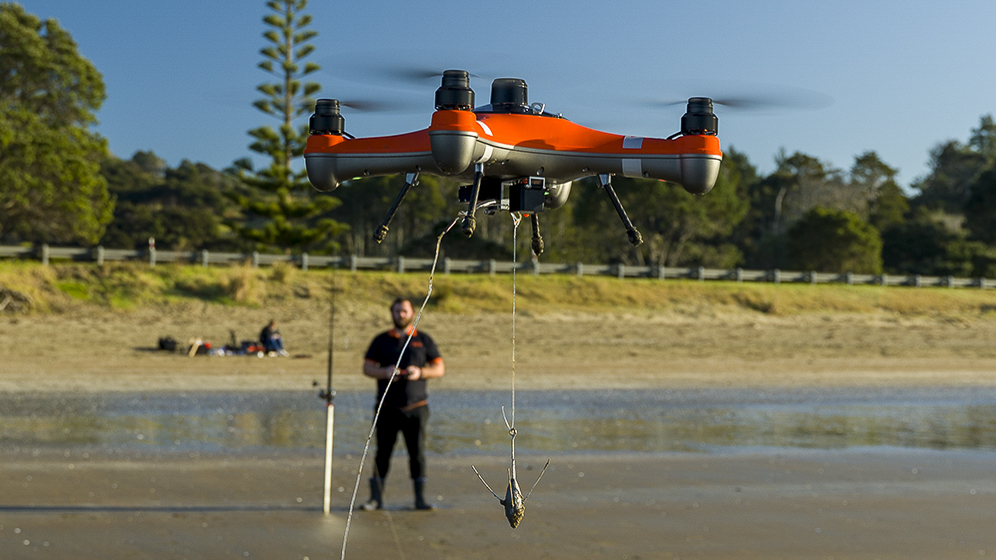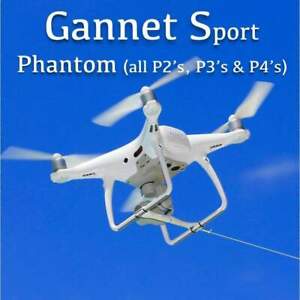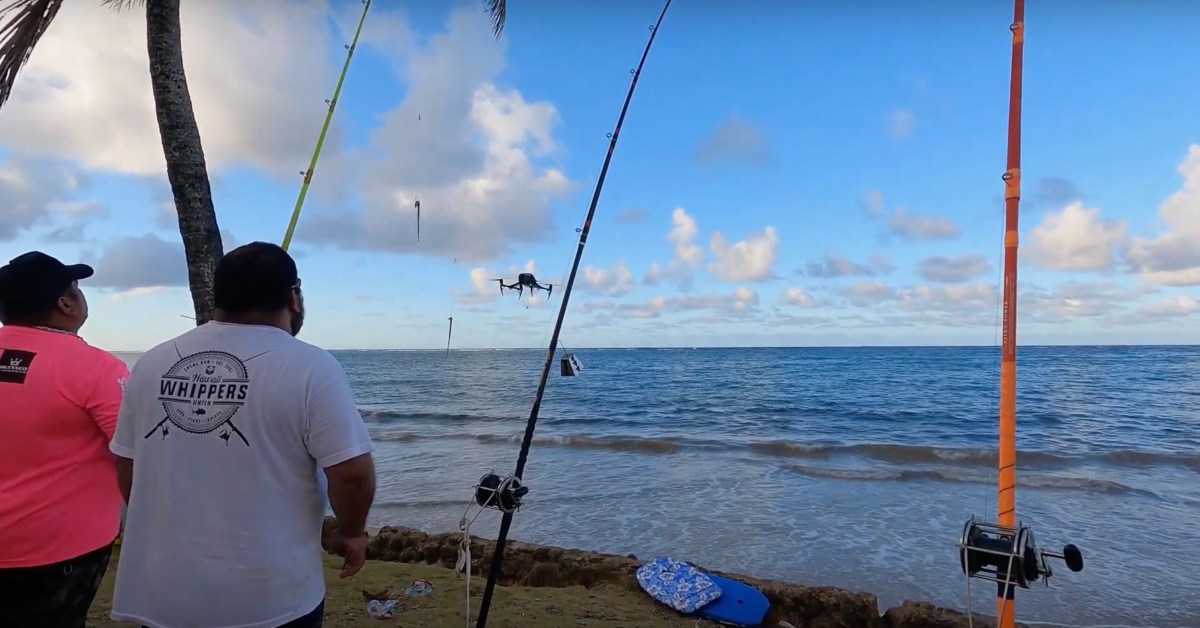
You can use a drone to see the waters surrounding your property if a fisherman is an avid one. The drones can be equipped with a variety of features, including a GPS positioning system, a GPS receiver, a GPS receiver, a GPS payload release, and an angle adjustable camera. You can also purchase fishing lines, which are stable and safe. One such example is the SKY RIGGER drone.
SKY RIGGER drone fishing line
The SKY RIGGER flexible fishing line system allows you to fish from the sky with minimum effort. Two rotating leg clamps allow the system to be attached to a variety of drone models. The release mechanism features a bayonet-style connection, and a cam lock arm that allows you to quickly open the line clamps. Sky RIGGER is unlike other drones and can be used for all types of fishing.
The SKY RIGGER's automatic release mechanism allows for the release of the fly when a fish strikes it. You can also manually let go of the line by using your rod or hand. This feature is available on all models of the SKY RIGGER. Before purchasing the new SKY RIGGER, it is recommended to purchase a Phantom 3. The following are some pros and con's of the new line:
It features a mechanical payload release
A drone with a mechanical payload release system is one of the most important aspects. Many of them are designed to allow the angler to release the fishing line with ease. Some models, however, do not include a release mechanism. Instead, the user must "yank" the fishing line to release the drone from the line. This can be difficult, especially for those who aren’t used to releasing the line with their hands.

Another important feature is its payload release mechanism. The drone should have the ability to release its payload when it strikes a fish. Catch and release fishing is a skill that should be practiced before you attempt it. Many have had positive experiences with the DJI Phantom. But, it is still not as advanced as other fishing drones.
It comes with a GPS location system
Rippton is a joint venture of Australia and Holland that specializes exclusively in technology-oriented fishing gear. Its mission is to increase angler success rates through the development of products that enhance fishing experience. Rippton's Mobula drone includes a GPS positioning and remote release. The Mobula has the ability to hold bait at surface, provide resistance for kite clips, as well as being environmentally friendly.
It's lightweight, weighing just 3 pounds, and can fly for up to 18 minutes. It has a high tech GPS system that can be controlled from as far as 2,000 meters away. It can fly for up to 1000m, which is half a mile. Its point of interest feature lets it take high-quality images of its surroundings. You can enjoy stunning views of fish through its high-resolution lens.
It includes a failsafe safety feature
Aerokontiki's drone fisherman has a failsafe feature. It monitors the battery level, and releases the line when it is needed. In case of battery failure, it will land back on dry ground to continue its mission. It uses industrial-grade flight controllers and can operate anywhere without recalibration. You can use the drone even in the most treacherous water spots.

FAQ
What is the difference in a quadcopter from a hexacopter.
Quadcopters are four-rotor helicopters that fly like traditional helicopters. It has four rotors which rotate independently. The hexacopter can be described as a quadcopter but has six rotors, instead of the usual four. Hexacopters are more stable and maneuverable than quadcopters.
Is Drone Use Banned in Your Country?
The FAA has banned drones from flying near airports, stadiums, sporting events, nuclear power plants, hospitals, prisons, and other restricted areas. They are allowed to fly at night by using GPS technology.
Can my drone be flown indoors?
You can fly your drone indoors. Your home should be free from obstacles and hazards. For example, you should avoid flying near windows, doors, heating vents, air conditioning units, electrical outlets, water pipes, and fireplaces.
Statistics
- With the top 10% making over $100/h and the bottom 10% making as low as $10/h. (dronesgator.com)
- According to ZipRecruiter, the minimum hourly wage of drone pilots is $20. (thedroneu.com)
- According to industry research from ZipRecruiter , there are 10 cities where the typical salary for a Drone Pilot job is above the national average. (dronesgator.com)
External Links
How To
How to Fly Drones With Beginners
A drone can be used to fly remotely controlled aircraft for photography, surveillance, scientific research, hobby and commercial purposes. Drones have been in use since World War II. However, commercial use began in 2010 when DJI released their Phantom series of quadcopters. There have been many drones made since then. These range from beginner-friendly drones like Parrot AR Drone 2.0 to more advanced multi-rotor craft like DJI Mavic Pro.
You can fly a drone in many different ways, including:
-
Remote control - This method uses a control device attached to your hand, which enables you to steer the drone through its flight path. There are two main types for controllers: Joysticks or On/Off switches, which can be used to control the drone's flight path.
-
Manual Control – This method lets users remotely control the drone by using a smartphone app. The app will give you instructions.
-
Autonomous Flight – This is when the drone handles all the piloting tasks. The drone is able to fly autonomously, without the need for human intervention. A drone must have a builtin camera and sensors capable to capture images and other data.
-
Triggered Flying - This method works in the same way as manual control. However, the pilot has to manually set up a route for the drone and it follows that route until reaching the endpoint. Once the programmed route has been completed, the drone returns to the base automatically.
-
Landing Gear - Some drones come equipped with landing gear that allows them to land safely if they lose power or run out of battery during flight.
-
Goggles: Some pilots use goggles in order to protect themselves against debris when operating.
-
Camera - You can capture photos and videos with your drone from the air.
-
Obstacles: Some drones are equipped with obstacle avoidance systems to prevent them from hitting obstacles.
-
Speed - Some drones can reach speeds of over 40 mph.
-
Battery Life - Most drones are capable of lasting between 20 minutes and three hours, depending on the power that you use.
-
Some drones are capable of traveling up to 30 miles depending upon their make and model.
-
Power source: Some drones will require an external power source while others can be powered by internal batteries.
-
Weight - Some drones can be as light as 1 pound while others can reach 4 pounds.
-
Size - The size of drones varies from small, easily carried devices to more substantial crafts that weigh in excess of 50 pounds.
-
Price - All drones fall within a specific price range, from high-end models that can cost thousands of dollars to lower-cost options starting at $100.